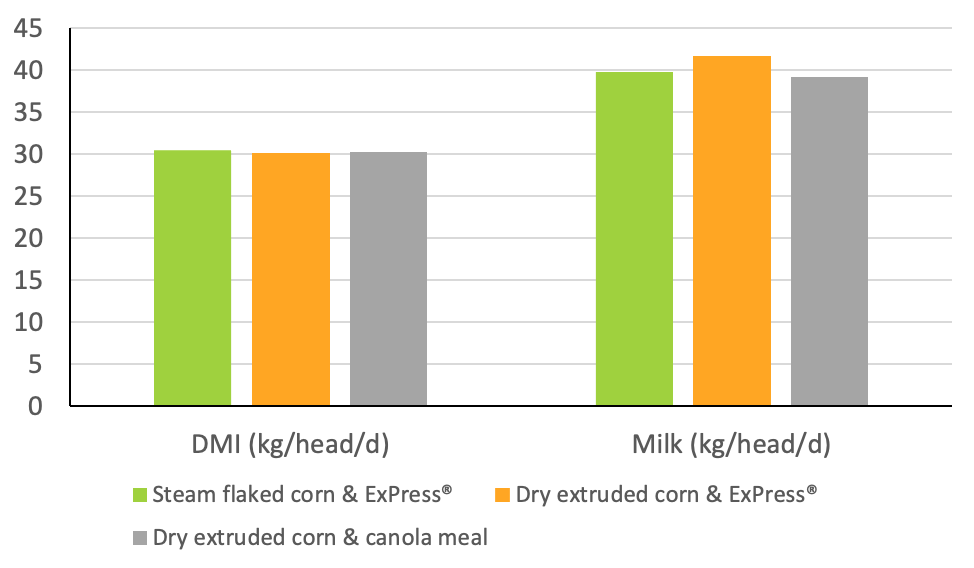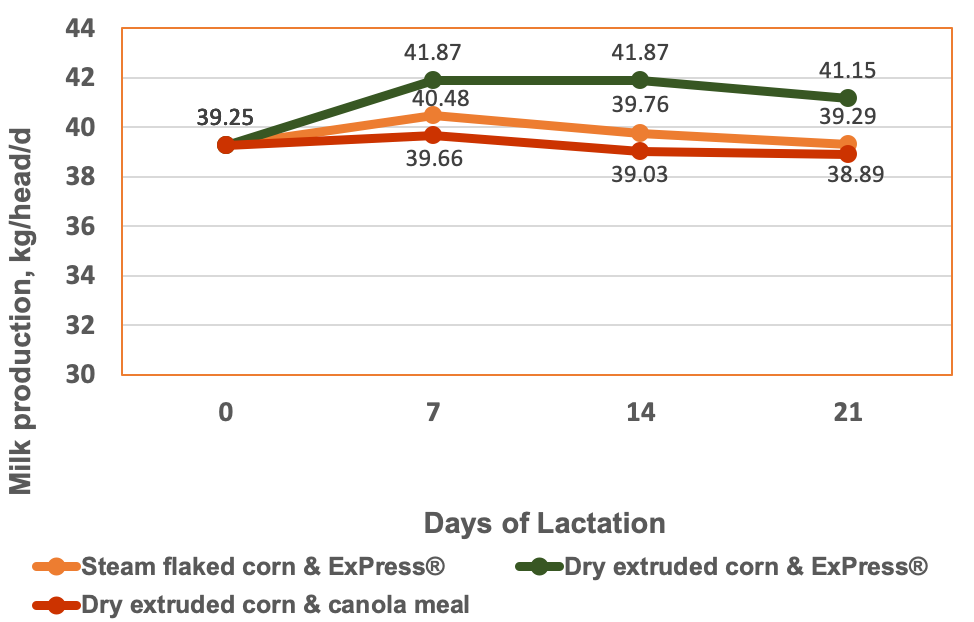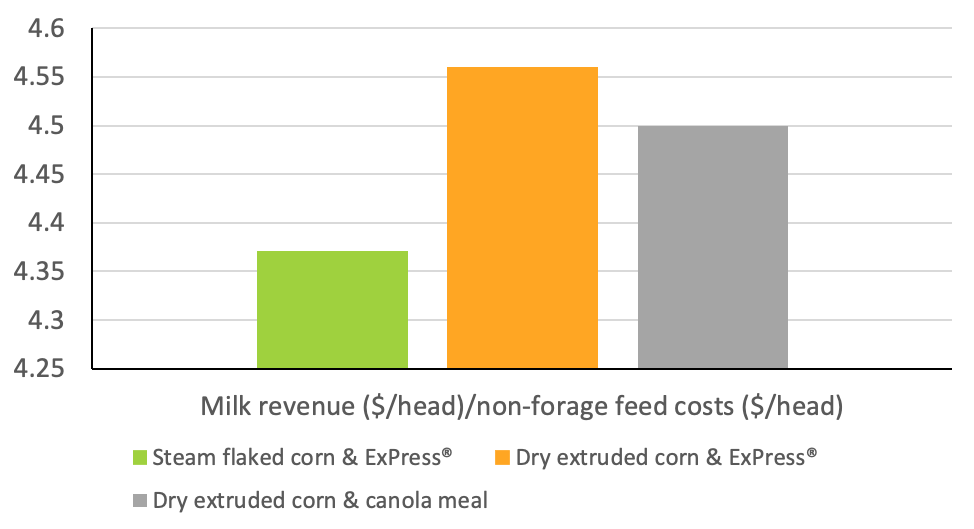There is a tendency, when formulating diets for animal production, to focus on diet costs. The cost of feeding animals is ongoing and can consume 70% to 90% of the total costs of production. Can the right feed increase revenue without compromising animal performance?
We recently concluded a study at Pennsylvania State University to assess improved commodity ground corn on milk production1. Our high-shear dry extrusion process was adapted to allow cooked, shaped corn production2; this corn contains starch that’s readily broken down in rumen, suitable for enhancing microbial protein and providing energy for milk production3.
To compare extruded corn, controlled diets consisting of steam-flaked corn and extruded corn but excluding ExPress® soy meal were used. ExPress® meal was replaced with solvent-extracted canola meal to determine the importance of digestible rumen by-pass protein and fat for milk production. As previously published, ground corn should not be considered a commodity4 in feeding.
After 21 days, cows fed extruded corn and ExPress® exhibited a 4.5% increase in milk production:
 *P<0.03, Harvatine, Penn State University (2021)
*P<0.03, Harvatine, Penn State University (2021) 
This data tells us:
• Dry extruded corn enhanced milk production
• When ExPress® was removed, the milk production benefit went away and equaled the lower production level achieved with steam-flaked corn and ExPress®
• Treatments had no effect on milk fat and protein levels
Note the formulation with extruded corn and ExPress® soy resulted in each cow consuming 1.7 kg (3.8 lbs.) of each ingredient/day.
The following profit/loss assumptions were made:
• Dry extruded corn priced $35/U.S. ton over steam-flaked corn ($190 vs. $155)
• ExPress® soy priced at $400/U.S. ton (+$60 over solvent-extracted canola meal)
• Milk price of $14/cwt. and typical ingredient prices
The greatest return is achieved using dry extruded corn and ExPress® soy:

Diet costs were greatest when extruded corn and ExPress® were fed together, but cows consumed less dry matter and produced 4.5% more milk. The revenue made up for the feed costs. This does not consider forage costs, which were constant.
It’s important to determine how much additional energy was liberated and available for the cow to produce milk with dry extrusion versus steam flaking. It’s known, from work at the University of Wisconsin, that additional kgs of milk production require 0.74 megacalories of diet energy. We can estimate the following:
Using the same value of NEL for steam-flaked corn and dry extruded corn could not account for the milk production boost when dry extruded corn was used. Dry extruded corn has 9% more NEL than steam-flaked corn.
Recommendations:
• Use dry extruded, shaped corn in your dairy formulations to improve milk production.
• Include an excellent source of digestible rumen by-pass protein and fat, like ExPress®. Realize a 4.5% increase in milk production, with no changes in milk protein and fat.
• Maximize profits by increasing milk production to the point that it compensates for feed costs.
High-shear dry extruded corn with ExPress® soy meal shows better ingredient nutrition increases revenue and improves performance of dairy cows. Contact us for more information.
References
1 Harvatine, 2021. Pennsylvania State University research report.
2 Albin, 2018. https://www.insta-pro.com/en/2018/10/04/utility-of-dry-extruded-shapes/
4 Albin, 2014. https://www.insta-pro.com/en/2014/07/24/corn-is-not-a-commodity/



